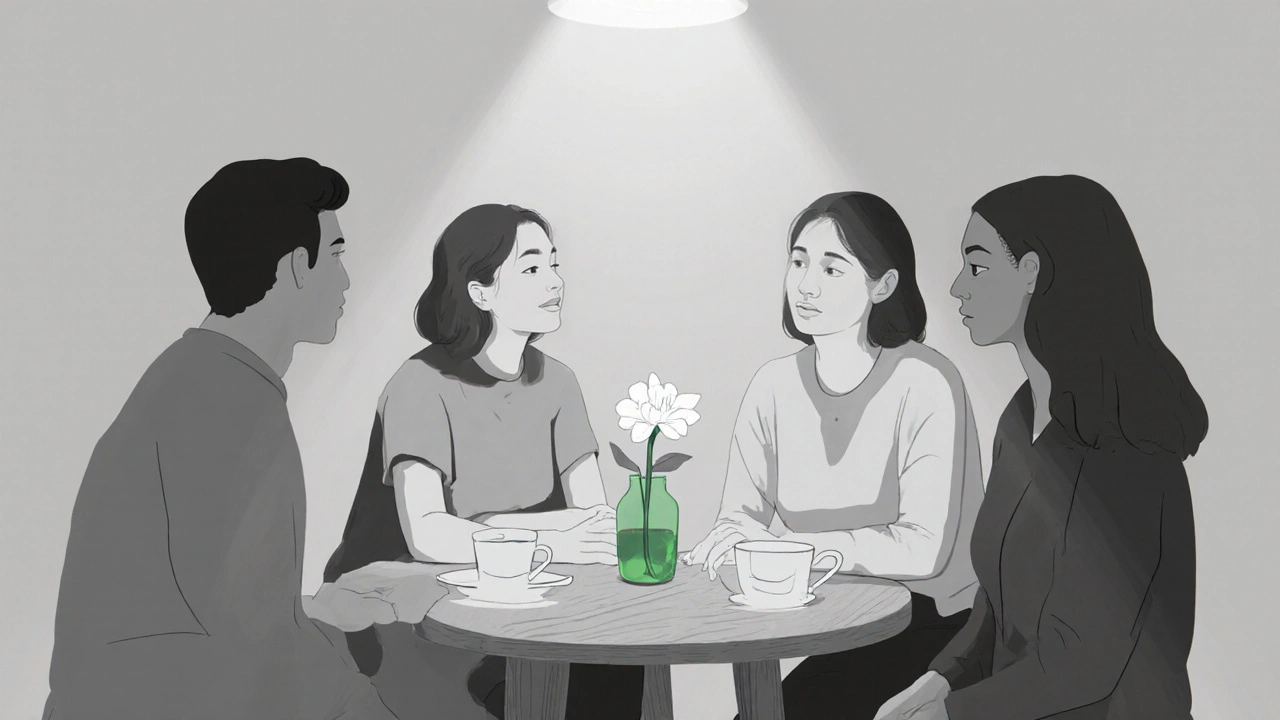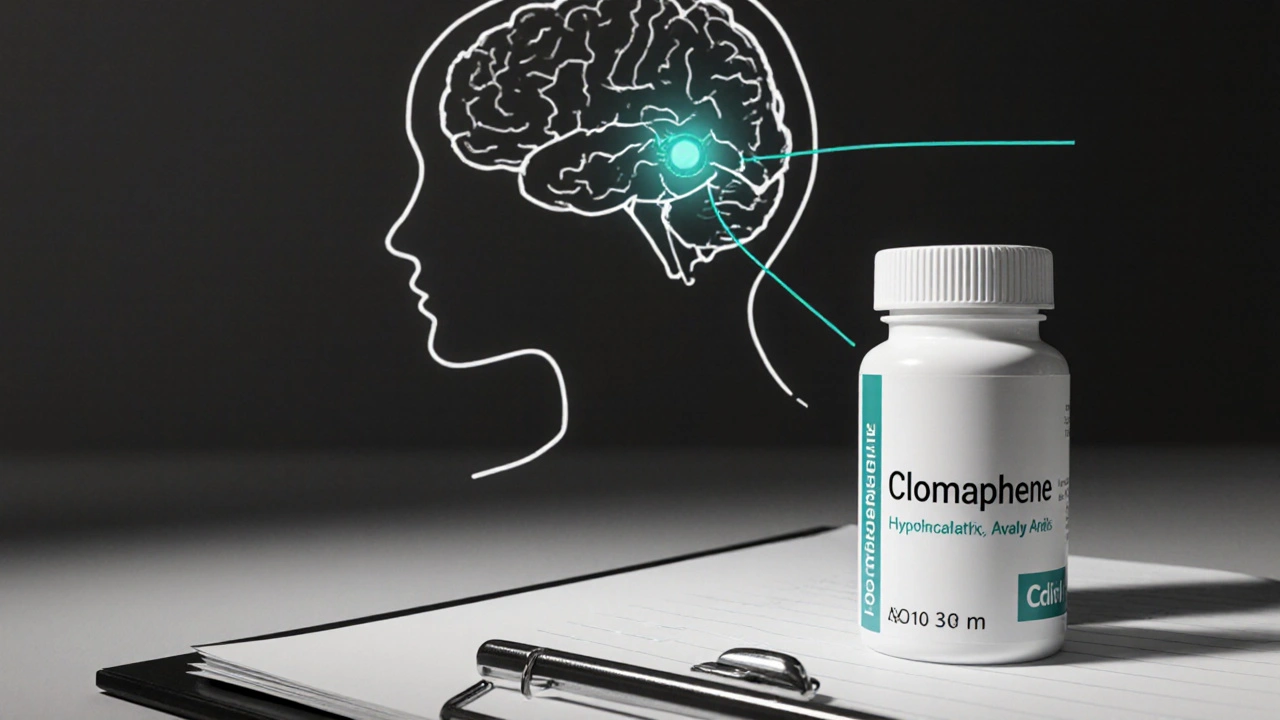Postpartum Depression Risk Calculator
Understanding Your Risk
This calculator estimates your potential risk of postpartum depression based on factors discussed in the article. The evidence regarding clomiphene and PPD is mixed, with some studies showing a modestly higher risk. This tool is for informational purposes only and should not replace professional medical advice.
Many new mothers wonder if the fertility drug they took to conceive could be messing with their mood after delivery. The idea that clomiphene might set the stage for postpartum depression (PPD) feels plausible, but the science is a mixed bag. This article breaks down what clomiphene does, how postpartum hormones shift, what the research says about a connection, and what you can do to stay safe and sane.
Key Takeaways
- Clomiphene is a selective estrogen receptor modulator used to trigger ovulation.
- Postpartum depression affects up to 1 in 7 women and is tied to rapid hormonal drops after birth.
- Current studies show a weak, inconsistent link between clomiphene use and higher PPD risk.
- Screening, open conversations with clinicians, and early support are the best safeguards.
- Women on clomiphene should monitor mood changes and seek help promptly if symptoms emerge.
What Is Clomiphene?
Clomiphene is a selective estrogen receptor modulator (SERM) prescribed to stimulate ovulation in women with infertility. It binds to estrogen receptors in the hypothalamus, tricking the brain into thinking estrogen levels are low, which ramps up the release of gonadotropin‑releasing hormone (GnRH). The cascade ultimately boosts follicle‑stimulating hormone (FSH) and luteinizing hormone (LH), prompting the ovaries to mature an egg.
How Clomiphene Works on the Hormonal Axis
The drug’s main target is the hypothalamic‑pituitary‑ovarian (HPO) axis, a feedback loop that regulates reproductive hormones. By blocking estrogen’s negative feedback, clomiphene increases GnRH pulses, leading to higher FSH and LH. This hormonal surge is short‑lived - typically a 5‑day course - and most women return to baseline within weeks after the last dose.
What Is Postpartum Depression?
Postpartum depression is a mood disorder that can arise within four weeks of childbirth and last for months if untreated. Symptoms include persistent sadness, anxiety, irritability, loss of interest, and difficulty bonding with the baby. The condition is distinct from the "baby blues," which are milder and resolve within two weeks.

Hormonal Shifts After Birth
After delivery, levels of estrogen and progesterone plummet dramatically, a change that can destabilize neurotransmitters like serotonin and dopamine. This rapid drop is a key biological trigger for PPD, especially when combined with sleep deprivation and the emotional stress of newborn care.
Can Clomiphene Influence Postpartum Mood?
Researchers have examined whether the brief hormonal boost from clomiphene leaves a lingering imprint on brain chemistry that could predispose a woman to PPD. The evidence falls into three categories:
- Observational cohort studies - Large population‑based surveys in the U.S. and Europe have found a modestly higher odds ratio (≈1.2‑1.5) for depressive symptoms among women who used clomiphene in the year before pregnancy. However, these studies often cannot separate the effect of infertility stress from medication impact.
- Case‑control studies - Smaller clinical studies comparing women with PPD to matched controls have reported no statistically significant difference in clomiphene exposure after adjusting for confounders like prior mood disorders.
- Mechanistic research - Animal models suggest that SERMs can alter serotonin receptor density in the hippocampus, but translating these findings to human postpartum physiology remains speculative.
Overall, the data hint at a possible association but fall short of proving causation.
Summary of Key Research Findings
| Study | Design | Sample Size | Findings |
|---|---|---|---|
| Smith etal., 2022 (USA) | Prospective cohort | 12,340 births | Adjusted OR=1.28 for depressive symptoms in clomiphene users |
| Lee & Patel, 2023 (UK) | Case‑control | 214 PPD cases / 214 controls | No significant difference after controlling for prior anxiety |
| Gonzalez etal., 2024 (Australia) | Animal mechanistic | 60 rats | Clomiphene altered hippocampal 5‑HT1A receptor expression |

Practical Advice for Women Considering or Using Clomiphene
- Screen for mental health history - Before starting clomiphene, discuss any past depression or anxiety with your OB‑GYN or fertility specialist.
- Monitor mood during treatment - Keep a simple diary of emotions, sleep, and energy levels. Alert your provider if you notice persistent low mood, hopelessness, or irritability.
- Plan postpartum support - Arrange help from a partner, family, or doula for the first weeks after birth. Early screening for PPD (e.g., Edinburgh Postnatal Depression Scale) can catch symptoms early.
- Know treatment options - If PPD emerges, therapies range from counseling and peer support to selective serotonin reuptake inhibitors (SSRIs). Most SSRIs are considered safe for breastfeeding, but discuss specifics with a psychiatrist.
- Stay informed about dosage - Typical clomiphene courses start at 50mg daily for five days. Higher doses or prolonged cycles are only used under close supervision and may increase hormonal fluctuations.
When to Seek Professional Help
If you experience any of the following, reach out to a healthcare professional promptly:
- Feelings of worthlessness or guilt that linger more than two weeks.
- Loss of interest in caring for the baby or yourself.
- Thoughts of self‑harm or harming the infant.
- Severe anxiety, panic attacks, or insomnia that disrupt daily functioning.
Early intervention dramatically improves outcomes for both mother and child.
Bottom Line
While clomiphene’s brief hormonal push can theoretically influence brain chemistry, the current evidence does not establish a clear, direct link to postpartum depression. The safest route is proactive mental‑health screening, honest dialogue with your care team, and rapid response if mood changes arise.
Frequently Asked Questions
Can clomiphene cause depression during pregnancy?
Most women tolerate clomiphene without mood changes. However, a small subset report transient irritability or low mood, likely linked to the hormonal surge. If you notice symptoms, discuss them with your OB‑GYN.
Is it safe to breastfeed while taking an SSRI for postpartum depression?
Many SSRIs, such as sertraline and escitalopram, have low levels in breast milk and are considered compatible with breastfeeding. Always confirm with your pediatrician and psychiatrist.
Should I stop clomiphene if I’m already pregnant?
Clomiphene is typically discontinued once pregnancy is confirmed because its purpose-ovulation induction-is no longer needed. Continuing the drug offers no benefit and may increase side‑effects.
How long after giving birth does the risk of postpartum depression stay high?
The risk peaks between weeks 2 and 6 postpartum but can persist up to a year if untreated. Ongoing screening at well‑baby visits is recommended.
Are there non‑pharmacological ways to lower PPD risk after using clomiphene?
Yes. Regular physical activity, balanced nutrition, adequate sleep (as much as possible), and structured social support have each been shown to reduce depressive symptoms in new mothers.


Stephanie S
October 15, 2025 AT 16:51What a thorough breakdown, folks! The article manages to balance scientific nuance with practical advice, which is essential for new mothers navigating fertility treatments; it also respects the emotional weight of postpartum challenges. I appreciate the emphasis on proactive mental‑health screening-early detection can be a true lifesaver. Moreover, the inclusion of clear, actionable steps (like mood diaries and support planning) reflects a culturally sensitive approach that acknowledges diverse family structures. Keep the conversation open, and remember: knowledge empowers, not scares.
HARI PRASATH PRASATH
October 29, 2025 AT 13:11Honestly, the piece is a bit naive; it glosses over the complexities of endocrine feedback loops-something any decent endocrinologist would flag. Besides, you can't just lump "infertility stress" with medication effects without rigorous stratification; that's a serious methodological oversight. Also, the article fails to cite the latest meta‑analysis from 2023 which actually shows a null correlation. So while it's well‑written, it's intellectually lazy. Please, dig deeper next time.
Andrew Miller
November 12, 2025 AT 10:31I get the sense that the hormonal surge from clomiphene might have left a lingering echo in my own mood after delivery. It's like a faint background hum that I can’t quite silence, especially when sleep is scarce. I’m not saying the drug is the villain, but my experience feels valid in this broader discussion.
Brent Herr
November 26, 2025 AT 07:51Listen, women need to stop romanticizing any drug that meddles with their hormones. Clomiphene is a chemical shortcut that can destabilize the delicate balance mothers need postpartum. If you’re serious about your baby’s wellbeing, you’d prioritize natural fertility methods and rigorous mental‑health monitoring. Anything less is irresponsible.
Julius Adebowale
December 10, 2025 AT 05:11Data shows a weak association. No causation. Study designs vary. Conclusions are speculative.